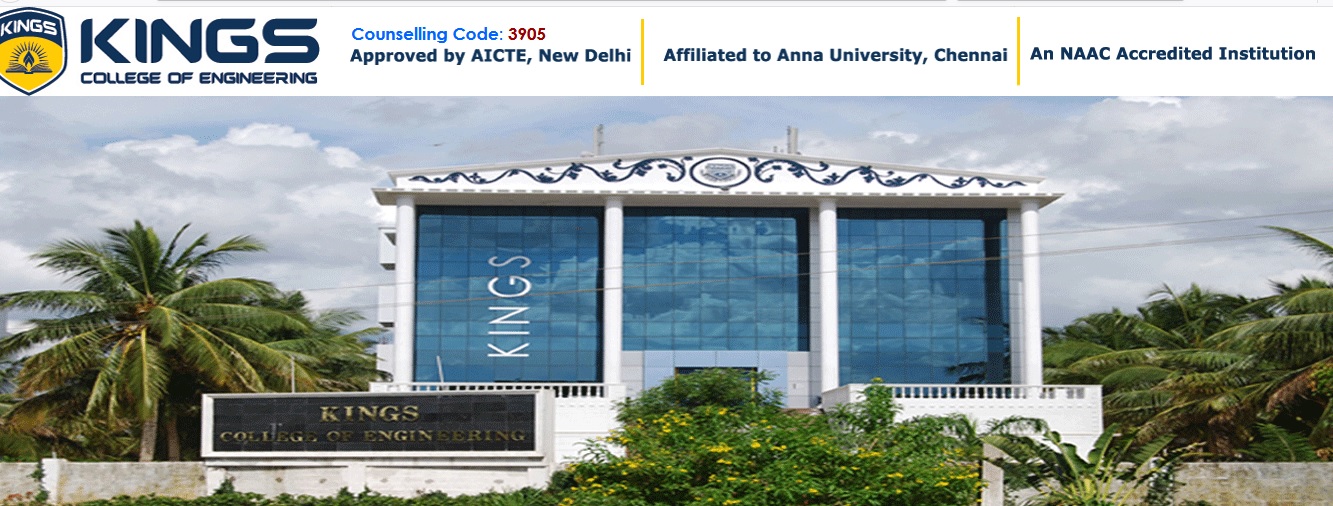EC1016 Wireless Networks Question Bank : kings.ac.in
Name of the College : Kings College Of Engineering
Department : Electronics & Communication Engineering
Subject : Wireless Networks
Website : kings.ac.in
Document Type : Question Bank
Download Model/Sample Question Paper : https://www.pdfquestion.in/uploads/ki…20NETWORKS.pdf
Kings Wireless Networks Question Paper
Unit- I
Physical And Wireless Mac Layer Alternatives :
Part-A : ( 2 Marks)
1. Name the five design considerations in selecting a modulation scheme for a wireless networks.
2. Name four space diversity techniques.
3. What are the advantages of high efficiency voice bond modems?
4. What are the types of diversity?
Related : Kings College of Engineering CS1029 Network Security Question Bank : www.pdfquestion.in/1318.html
5. Why is out of band of radiation is an important issue in designing modulation scheme?
6. Define ACI
7. Why is PPM used with IR communication instead of PAM?
8. Write down the formula for Nidle.
9. What is CSMA?
10. Explain about hidden terminal problem.
11. What is capture effect?
12. Define : (i) Persistent (ii) non- Persistent (iii) 1-Persistent (iv) P-Persistent.
13. What is the difficulty of implementing CSMA/CD in a wireless environment?
14. What are the popular access schemes for data network? Classify them.
15. Explain about Space Diversity.
16. What are the sectored antennas? How they are useful in combating multipath?
17. Difference between ALOHA and slotted ALOHA.
18. What is the difference between the access technique of IEEE802.3 and IEEE802.11?
19. What is the difference between performances evaluation of voice oriented fixed assignment and data oriented random access?
20. What is Multi carrier Modulation?
21. What do you understand about Ultra Wide Band (UWB) Technology?

Part-B (16 Marks) :
1. With necessary diagram explain the different type of Random Access Methods of Mobile Data Services. (16)
2. List out the different type of diversity. Techniques and explain each with necessary diagram. (16)
3. What are the considerations needed in the design of wireless modems? Substantiate. (16)
4. a. What is UWB pulse transmission? Describe the salient features. (8)
b. Explain about short distance range in wireless networks. (8)
5. What are the broad band modems for higher speeds and explain. (16)
6. Explain about traditional modems and equalizers. (16)
7. Explain about integration of voice and data traffic. (16)
Unit-II
Wireless Network Planning And Operation :
Part-A ( 2 Marks) :
1. Name any three advantages of an infrastructure topology over an Adhoc topology.
2. Compare single hop and multi hop Adhoc network topologies.
3. Name the five different cell types in the cellular hierarchy and compare them in terms of coverage area antenna site.
4. Why is hexagonal cell shape preferred over square or triangular cell shapes to represent the cellular architecture?
5. Name five architectural methods that are used to increase the capacity of an analog cellular system without increasing the number of antenna sites.
6. Explain :
7. Explain how smart antennas can improve the capacity of cellular network.
8. What are channel allocation techniques?
9. Define FCA, DCA, HCA
10. Compare FCA, DCA
11. Define : Channel borrowing technique and types
12. Define : Mobility management.
13. Name the two important issues in mobility management.
14. What is location management? What are the three components of location management?
15. Name three paging mechanisms.
16. Explain about paging.
17. Explain three traditional handoff techniques?
18. Difference between mobile controlled and mobile assisted handoff?
19. Difference between centralized and distributed power control.
20. What are the privacy and authentication requirements of wireless networks?
Part-B :(16 Marks)
1. Explain the two fundamental types topologies used in the wireless networks? (16)
2 Explain the concept of cellular topology and cell fundamentals with examples. (16)
3. Explain in detail about capacity expansion technique. (16)
4. Explain in detail about channel expansion techniques. (16)
5. What are the parts available in location management and explain in detail. (16)
6. What is meant by handoff? What are the issues available in handoff management explains with neat diagram. (16)
7. Discuss about power control mechanism with example. (16)
8. Explain in detail about security in wireless networks. (16)
9. Overview of network security (16)
10. Explain about Mobile IP. (16)
Unit III
Wireless Wan
Part-A :( 2 Marks)
1. Difference between registration and call establishment.
2. What are the reasons to perform handoff?
3. Difference between network decided and mobile assisted handovers?
4. Name five most important logical channels in GSM.
5. What are the three types of bursts?
6. What are the three types of control channels?
7. What is IS-95?
8. What are the bandwidth and chip rates used in WCDMA and how they compare with CDMA one?
9. Why is power control important in CDMA?
10. What forward channels are involved in IS-95 for power control?
11. Name the connectionless and connection oriented services provided by the GPRS?
12. What is GPRS-136? How does it differ from GPRS?
13. What is the importance of the framing structure in GSM?
14. Name three sub systems in the GSM architecture.
15. What are VLR and HLR and why we need them?
Part-B : (16 Marks)
1. What are the mechanisms available to support mobile environment? (16)
2. Draw the protocol architecture of GSM and explain in detail. (16)
3. Explain in detail about IS-95 CDMA forward channels? (16)
4. Explain in detail about IS-95 CDMA reverse channels? (16)
5. Explain in detail about IMT-2000? (16)
6. What is GPRS? Explain in detail about GPRS. (16)
7. Explain in detail about SMS and mobile application protocol. (16)